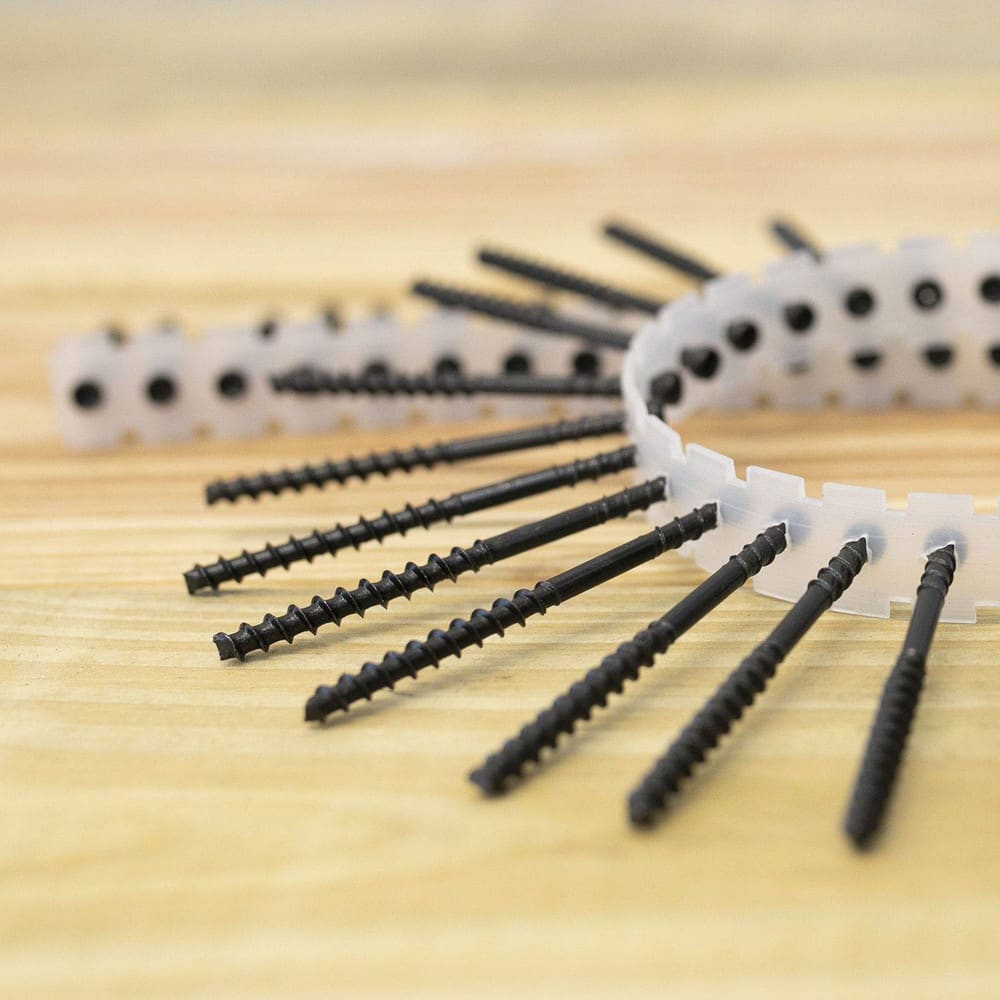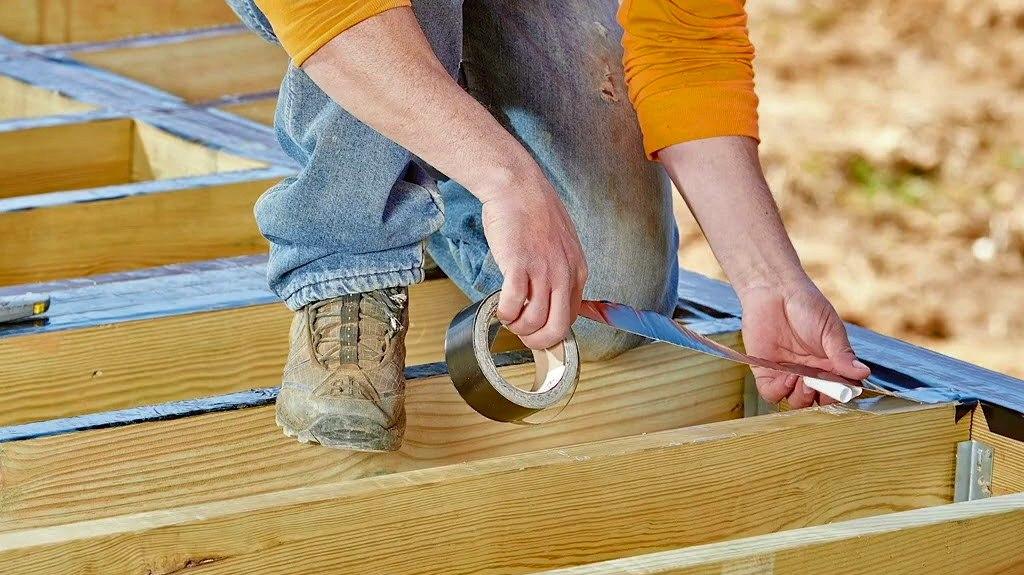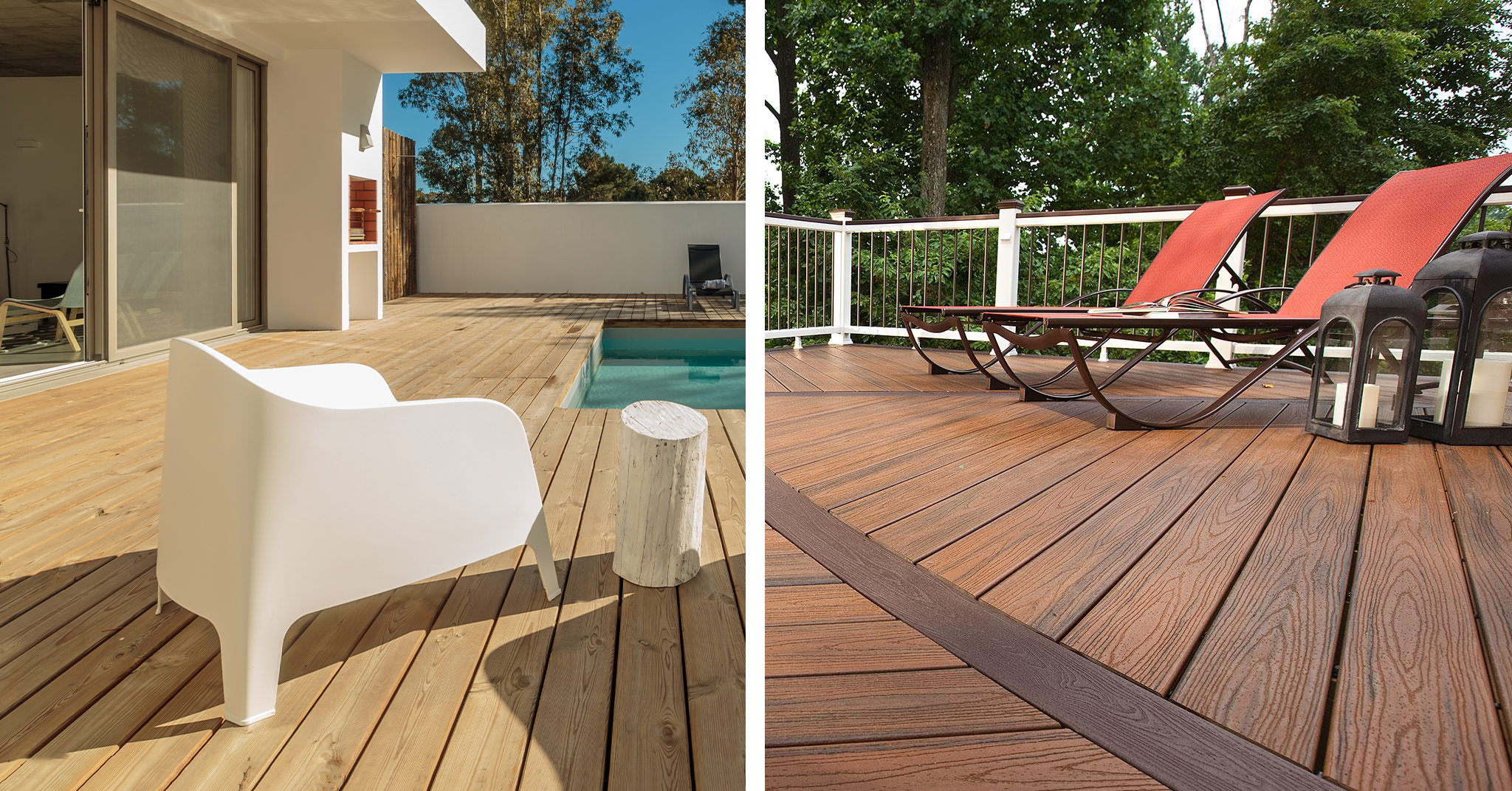
Choosing the right decking material is crucial for any project. Composite and pressure-treated wood are the top contenders, each offering unique benefits. Below, we compare them across key factors to help you decide.
Composite Decking vs. Pressure-Treated Lumber: How Do the Two Most Popular Types of Decking Stack Up?
Whether you’re resurfacing your deck or building a brand new one, a big decision is what type of deck boards you want to install. The two most popular options are pressure treated wood and composite. We’ve compared composite decking vs. pressure-treated lumber based on five categories: cost of materials, installation time, maintenance over time, sustainability, and appearance.
 |
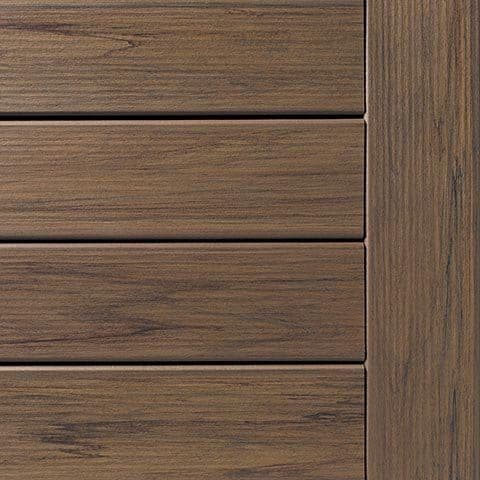 |
| Pressure-treated wood | Composite decking |
Cost of Materials
When comparing pressure-treated wood vs. composite decking costs, you can expect to pay around $1.25–$5.60 per linear foot* for pressure treated lumber. It's a familiar product for pros and DIYers that won’t break the bank. However, you’ll also need to factor in the fastener cost. You can use any face screw with pressure treated wood, but it will come at the expense of making repairs down the road. So consider investing in a face screw that won’t crack or split the board or using an edge fastening system that leaves the board’s surface free from fasteners.
Composite decking manufacturers offer square and grooved decking at various price points, so you can find one that fits your budget, but you can expect to pay somewhere between $2.90 and $6 per linear foot*. When it comes to fasteners, you could use a color-matched composite screw or spend a little more on a hidden fastener that results in a higher-end finish. For square decking, consider an edge fastening system that secures the board through the edge, and for grooved decking, use Universal Deck Clips for a secure install.
Installation Time
If you're comparing composite decking vs. treated lumber based on installation time, you must keep several factors in mind. Depending on the quality of the pressure-treated boards you get, you may have to spend some time straightening each board before you can fasten. To speed up that process, check out a tool like the CAMO LEVER to straighten warped boards effortlessly.
Make short work of every deck installation with the CAMO LEVER Pro Pack and get more done with fewer crew members — you can even build a deck by yourself. Just lay your boards, set the three tools on your joists, lock them in, and start fastening.
Then, you can drive the screws by hand, bending over at each joist or moving around on your knees. If you want to save time—and your body—you could use a collated fastening tool that allows you to fasten while standing.
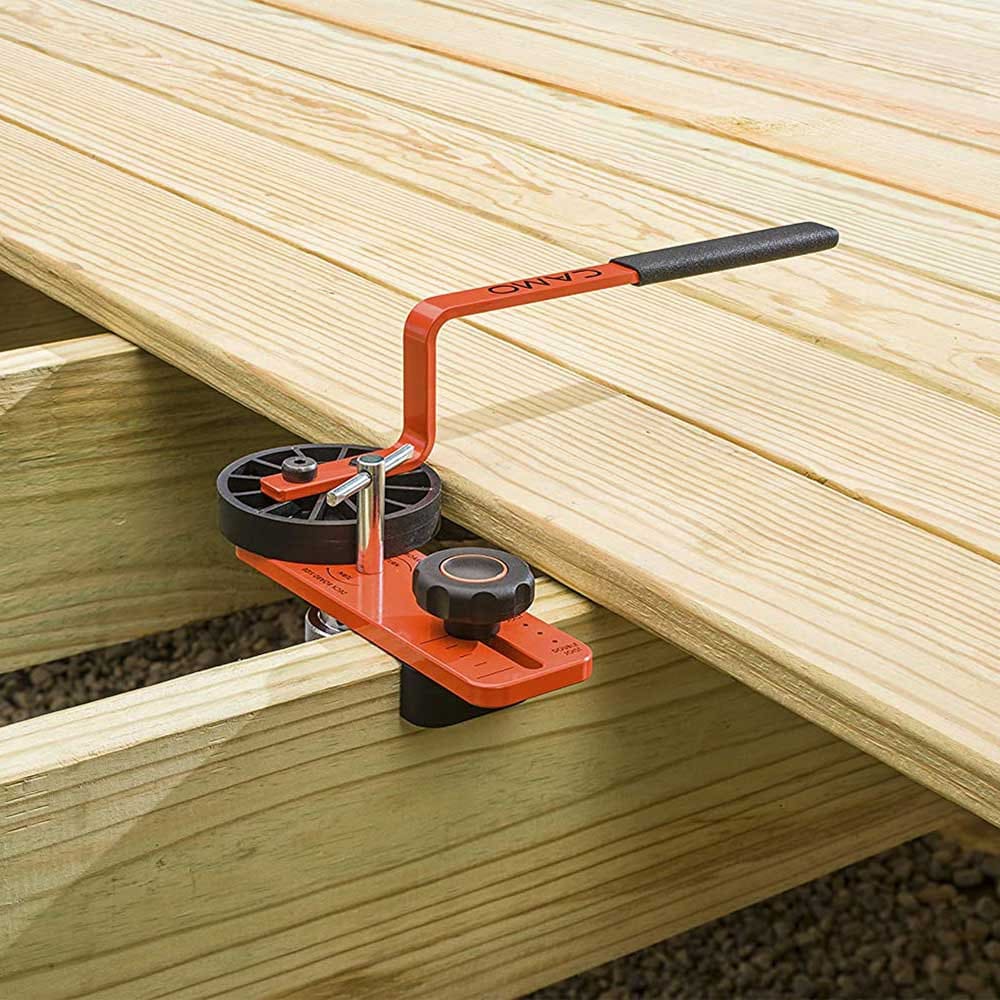 |
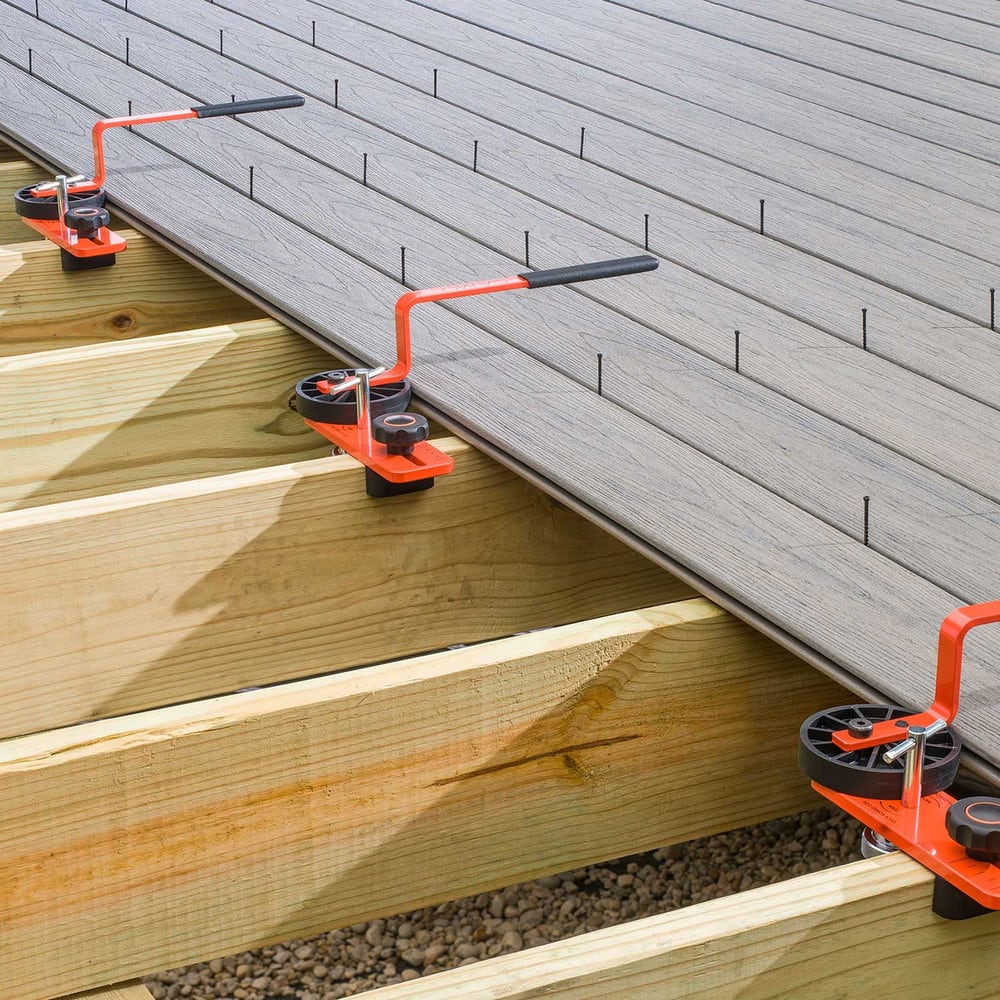 |
| CAMO LEVER | CAMO LEVER Pro Pack |
Although you won’t have to straighten them before fastening, square composite deck boards will take a similar amount of time to install compared to pressure treated boards. You can use color-matched face screws for a quick solution or a hidden system like plugs or Edge fastening, which will take a little longer but provide a better result.
Grooved composite decking is the fastest to install if you use Universal Deck Clips, which allows you to set multiple boards and clips before fastening. In addition to our easy-to-use clips, CAMO offers two stand-up tools, the ClipDRIVE and DRIVE, that speed up installation.
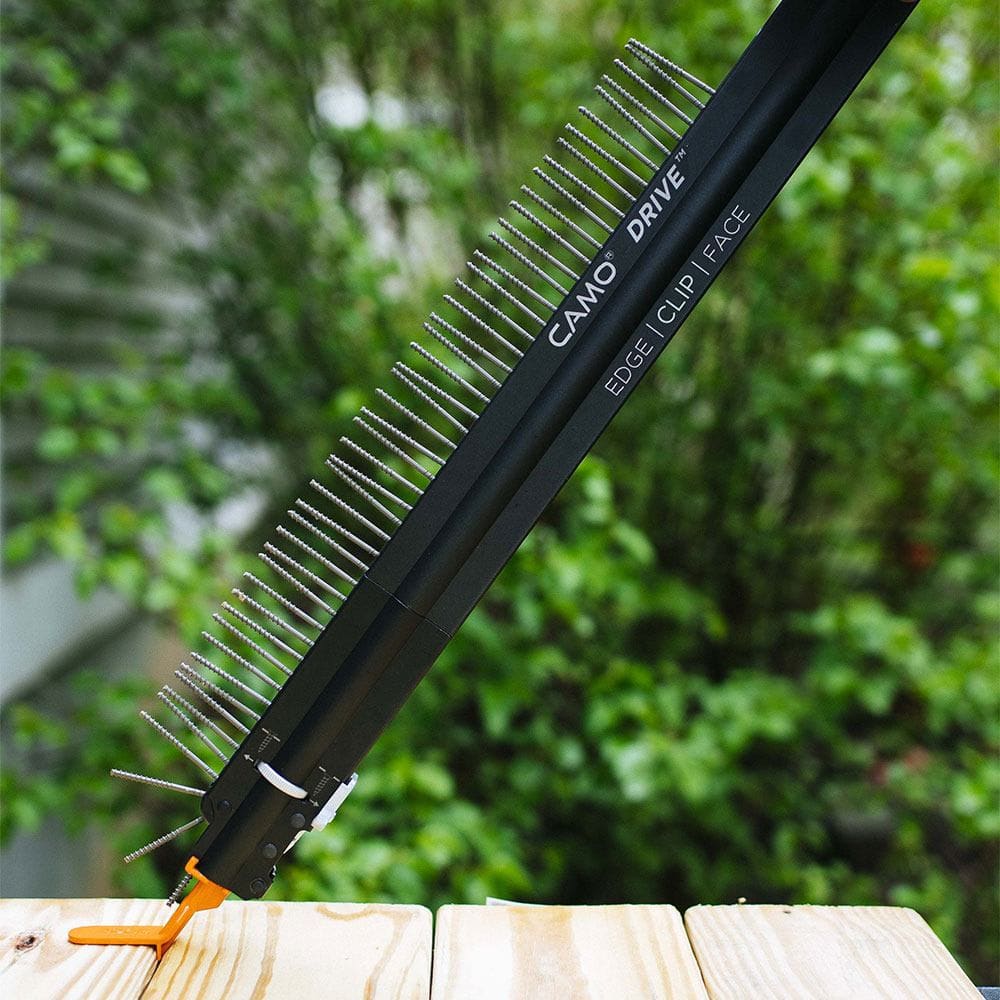 |
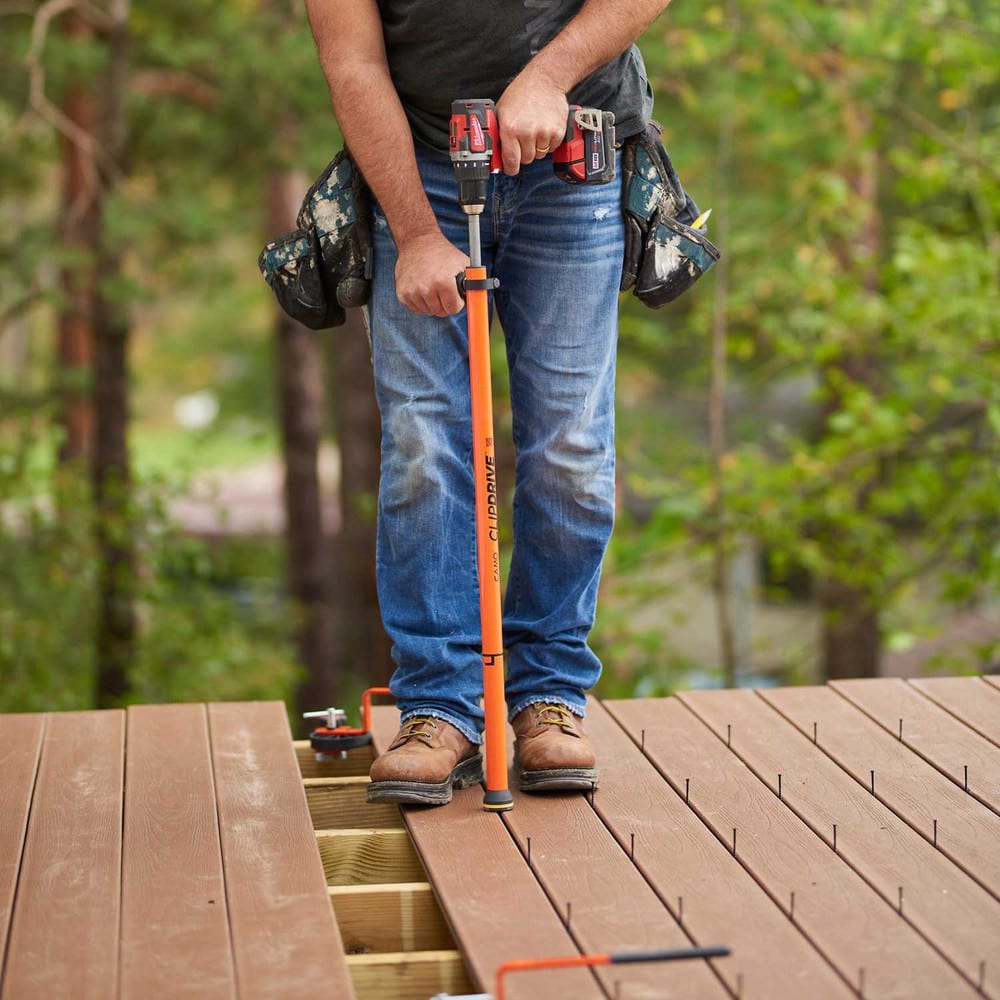 |
| CAMO DRIVE | CAMO ClipDRIVE |
Deck Maintenance Over Time
After installation, you will spend more time working on a pressure treated deck to keep it looking its best and maximize its lifetime of about 15 years**. That means you’ll be investing time every year to pressure wash, sand, repair, and stain your deck.
Composite boards, on the other hand, endure weather better, repel insects, and don’t require paints or stains. After installation, a simple sweep and scrub every year will keep the surface looking new. Plus, manufacturers often have warranties on their composite boards, giving you peace of mind over their lifetime of about 20+ years.
Sustainability
Sustainability is a topic that often comes up when people compare composite decking vs. pressure-treated wood. If you're seeking an eco-friendly decking option that requires less maintenance and offers great value over time, composite decking is worth considering. It's crafted from recycled materials like plastic and reclaimed wood, offering a greener option with a reduced carbon footprint.
Composite decking also stands out because it's sturdier, requiring fewer replacements over the years and saving resources.
Wood decks, on the other hand, contribute to deforestation and often need frequent treatment with various chemicals to stay in good condition. While oils and varnishes can help preserve wood decks, they might also have adverse effects on your garden or the local environment.
Appearance
When it comes to appearance, composite decking offers a broader range of styles compared to wood, with more colors and designs to choose from. But folks who love traditional wood might not appreciate the perks of composite decking as much.
Many people choose wood because it has that genuine, natural texture, especially with premium types like redwood or bamboo, which give off a rustic, top-notch appearance that composites often can't match. Wood can be painted or stained over time, giving it versatility, unlike composite materials, which keep their look for years. While composites retain their appearance without much change, you lose the option to easily switch up the color or finish as your style evolves.
Trust Your Deck Needs to DIY Home Center
Ultimately, deciding between wood and composite comes down to personal preference and how much time and money you want to put into your deck. Whichever board you choose, you can always take steps to build better to make your deck look great and last. DIY Home Center will be with you every step of the way. Shop deck products now or contact us for assistance.
Thanks to CAMO for contributing this guest post. For the products referenced and more, shop our CAMO Store.
Frequently Asked Questions About Composite Decking vs. Pressure-Treated Wood
As a leading deck products supplier, DIY Home Center fields many questions about composite decking vs. pressure-treated wood. Here are some of the common questions we receive.
Can composite decking be used around pools and spas?
Yes, composite decking is an excellent choice for areas around pools and spas. It's designed to withstand water exposure, and its textured surface provides a slip-resistant finish. Plus, it doesn't splinter, adding an extra layer of safety for those walking around barefoot.
How do seasonal changes affect composite decking vs. treated lumber?
Composite decking is more resistant to the expansion and contraction caused by temperature fluctuations. It maintains its structural integrity throughout the seasons, whereas wood may warp, crack, or shrink with changing weather conditions, requiring regular maintenance to address these issues.
Is composite decking safe for outdoor grilling areas?
Composite decking can be used in outdoor grilling areas, but it's essential to take some precautions. Always use a grill mat to protect the surface, and ensure there's adequate ventilation to prevent heat accumulation. Composite materials are generally less flammable than wood but can still be affected by direct heat exposure.
- *Wood Deck vs Composite Deck: Which One Is Right for You?, familyhandyman.com
- **Pressure Treated Lumber Deck Installation Cost & Price Guide, deckcostguide.com





























